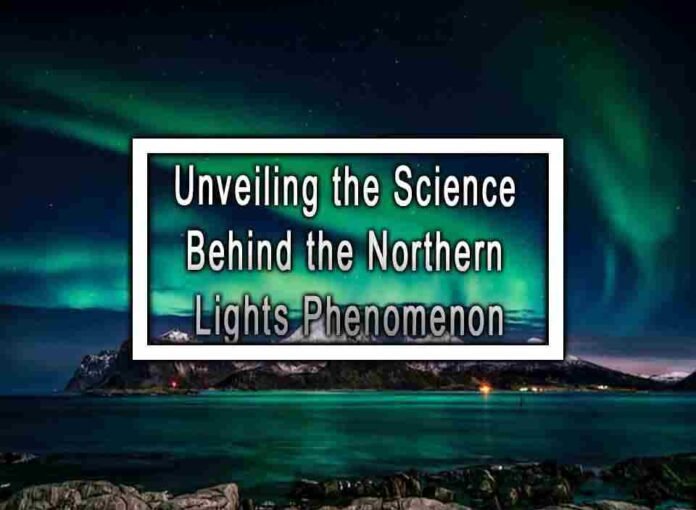The Northern Lights, also known as the Aurora Borealis, is a mesmerizing natural phenomenon that occurs in the polar regions of the Earth. It is a breathtaking display of colorful lights dancing across the night sky. The science behind this phenomenon involves interactions between the Earth’s magnetic field, solar wind, and atmospheric gases. Here’s how it works:
Solar Wind and the Sun:
- The Sun constantly emits a stream of charged particles called the solar wind. These particles are composed mainly of electrons and protons. The solar wind travels through space and reaches Earth’s magnetosphere, which is the region around the Earth influenced by its magnetic field.
Earth’s Magnetic Field:
- The Earth has a strong magnetic field that extends into space and surrounds the planet like a protective shield. The magnetic field lines are concentrated near the magnetic poles, which are not necessarily aligned with the geographic poles.

Magnetosphere Interaction:
- When the charged particles in the solar wind encounter Earth’s magnetosphere, they can become trapped along the magnetic field lines. As the solar wind particles approach the Earth, they collide with the gases in the Earth’s upper atmosphere.
Excitation of Atmospheric Gases:
- These collisions between solar wind particles and atmospheric gases, such as oxygen and nitrogen, result in the excitation of these gases. Excitation involves absorbing energy from the solar wind particles.
Emission of Light:
- After being excited, the atmospheric gases release the absorbed energy in the form of light. The colors of the Northern Lights depend on the types of gases involved and the altitude at which the interactions occur.
- Oxygen molecules at higher altitudes (around 100-300 kilometers above the Earth’s surface) emit red and green light, while nitrogen molecules emit pink, purple, and blue light.
Dancing Lights:
- The movement and dancing motion of the Northern Lights are caused by the Earth’s rotation and the changing interaction between the solar wind and the magnetosphere.
Geomagnetic Storms:
- Sometimes, particularly intense solar activity can lead to geomagnetic storms. These storms enhance the interaction between the solar wind and Earth’s magnetosphere, resulting in more vivid and widespread displays of the Northern Lights.
To witness the Northern Lights, you need clear, dark skies away from city lights, particularly in regions near the polar circles. The phenomenon is more common during periods of high solar activity, which follow an 11-year solar cycle.
The Southern Lights, or Aurora Australis, occur in a similar way in the Southern Hemisphere near the South Pole. Both the Northern and Southern Lights are awe-inspiring examples of the intricate interplay between the Sun, Earth’s magnetic field, and our planet’s atmosphere.











